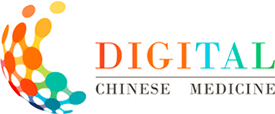Abstract:
Objective To review and synthesize preclinical and clinical evidence regarding traditional Chinese medicine (TCM) formulations and bioactive herbal compounds in lupus nephritis (LN), and to identify direction and research priorities for integrating TCM with professional care.
Methods A narrative literature review was conducted by searching Scopus, PubMed, Web of Science, and Google Scholar for articles published between January 1, 2011 and March 31, 2024. Search terms combined controlled vocabulary e.g., medical subject headings (MeSH) and free-text words including lupus nephritis, traditional Chinese medicine, Chinese herbal medicine, formulation, and names of specific herbs Leigongteng (Tripterygii Wilfordii Radix et Rhizoma), Baishao (Paeoniae Radix Alba), and Yinghao (Artemisiae Annuae Herba). Both randomized controlled trials and observational studies were included, along with mechanistic preclinical studies and pharmacologic investigations. Inclusion criteria were studies that reported renal outcomes (proteinuria and estimated glomerular filtration rate), immune-modulatory mechanisms, or safety and herb-drug interaction data. Studies without primary data, case reports, or those lacking relevance to LN were excluded. References of key articles were manually screened to identify additional eligible studies.
Results TCM formulas e.g., Liuwei Dihuang Pills (六味地黄丸), Zhibai Dihuang Pills (知柏地黄丸), and Huanglian Jiedu Decoction (黄连解毒汤) and herbal medicines e.g., extracts from Leigongteng (Tripterygii Wilfordii Radix et Rhizoma), Baishao (Paeoniae Radix Alba), and Yinghao (Artemisiae Annuae Herba) were commonly used in the above studies. TCM formulations and their constituent compounds showed multi-modal mechanisms relevant to LN pathogenesis, encompassing immunomodulation (reduction of autoreactive B/T cell activity, regulatory T cell enhancement), inhibition of pro-inflammatory signaling pathways nuclear factor kappa-light-chain-enhancer of activated B cells (NF-κB), mitogen-activated protein kinase (MAPK), nucleotide-binding oligomerization domain (NOD), leucine-rich repeat (LRR) and pyrin domain-containing protein 3 (NLRP3 inflammasome), anti-fibrotic and antioxidant effects, and direct renal-protective properties. In many studies, these indicators can reduce proteinuria and improve renal function. Clinical data, while promising, are heterogeneous in design, sample size, endpoints, and TCM formulation standardization. Safety concerns (notably with Tripterygium preparations) and potential herb-drug interactions with immunosuppressants remained important considerations.
Conclusion TCM offers biologically plausible and multi-targeted adjuvant strategies for LN that may enhance therapeutic efficacy and reduce toxicity when combined with modern therapies. To translate these promises into clinical practice, future work should prioritize the standardization of TCM preparations, randomized controlled trials with clinically meaningful renal endpoints, elucidation of molecular mechanisms, and systematic evaluation of pharmacokinetic and safety interactions. Such integrative research will be essential to define the TCM’s role in evidence-based, patient-centered LN management.









 下载:
下载: